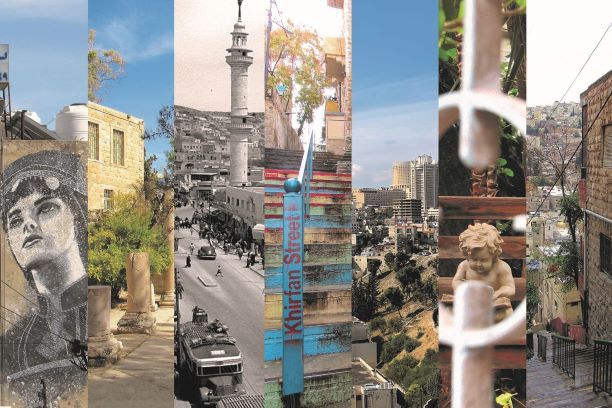A selection of scenes from Amman, showing (from left to right): Nadim Al Mallah St. mural in Jabal al Weibdeh, Darat Al Funon in Jabal al Weibdeh, King Talal St. in the 1950s, al Husseini mosque in the background, stairs of Amman from Khirfan St., a view from Jabal al Weibdeh to al Burj Tower, a sculpture in the back yard of a house in Jabal Amman, stairs in Jabal Amman. Copyright: Shatha Mubaideen 2019
Archaeology has undergone a digital revolution that has transformed working practices across the globe and hugely increased the amount of data available for research. Many initiatives exist that try to organise and make sense of the influx of data, further contributing to creating more digital data in the process. The Endangered Archaeology in the Middle East and North Africa (EAMENA) project, which was the subject of a recent Special Issue of Levant that explored the research potential of the EAMENA database, is one such initiative. During this meeting, the impact of the EAMENA methodology will be explored from the perspectives of two countries where versions of the EAMENA database will be implemented for heritage management on a national scale: Jordan and the State of Palestine.
Register for the event here.
About the panellists:
Pascal Flohr, Michael Fradley and Letty ten Harkel were guest editors of the Levant Special Issue, Endangered Archaeology in the Middle East and North Africa: mapping, heritage management and research. Michael joined the EAMENA project in 2015 and specialises in remote-sensing applications in archaeology. Pascal and Letty both joined the project in 2016 and specialise in human-environment relations during later prehistory, and the archaeology and heritage of more recent time periods, respectively.
Jordan will be represented by Shatha Mubaideen (CBRL) with Dana Salameen (DoA) and Rudaina Al Momani (CBRL) from the Amman Heritage Houses Project, which used the EAMENA methodology to document Amman’s recent heritage. Shatha Mubaideen was also Jordan Project Manager for the Mapping Digital Heritage in Jordan (MaDiH) Project (2019-2021) towards the long-term sustainable development of Jordan’s digital cultural heritage. She is an architect who found her interest in archaeology growing since she attended graduate school at the University of Jordan, where she received an M.Sc in Architectural Engineering and Cultural Resource Management.
Mohammad Al-Jaradat, MoTA Palestine, graduated from Birzeit University with a degree in archaeology and history. He has been working in data gathering and digitisation using Geographic Information System (GIS) for over 20 years. Al-Jaradat is a key participant in Palestine’s EAMENA database and has uploaded more than 800 sites.












